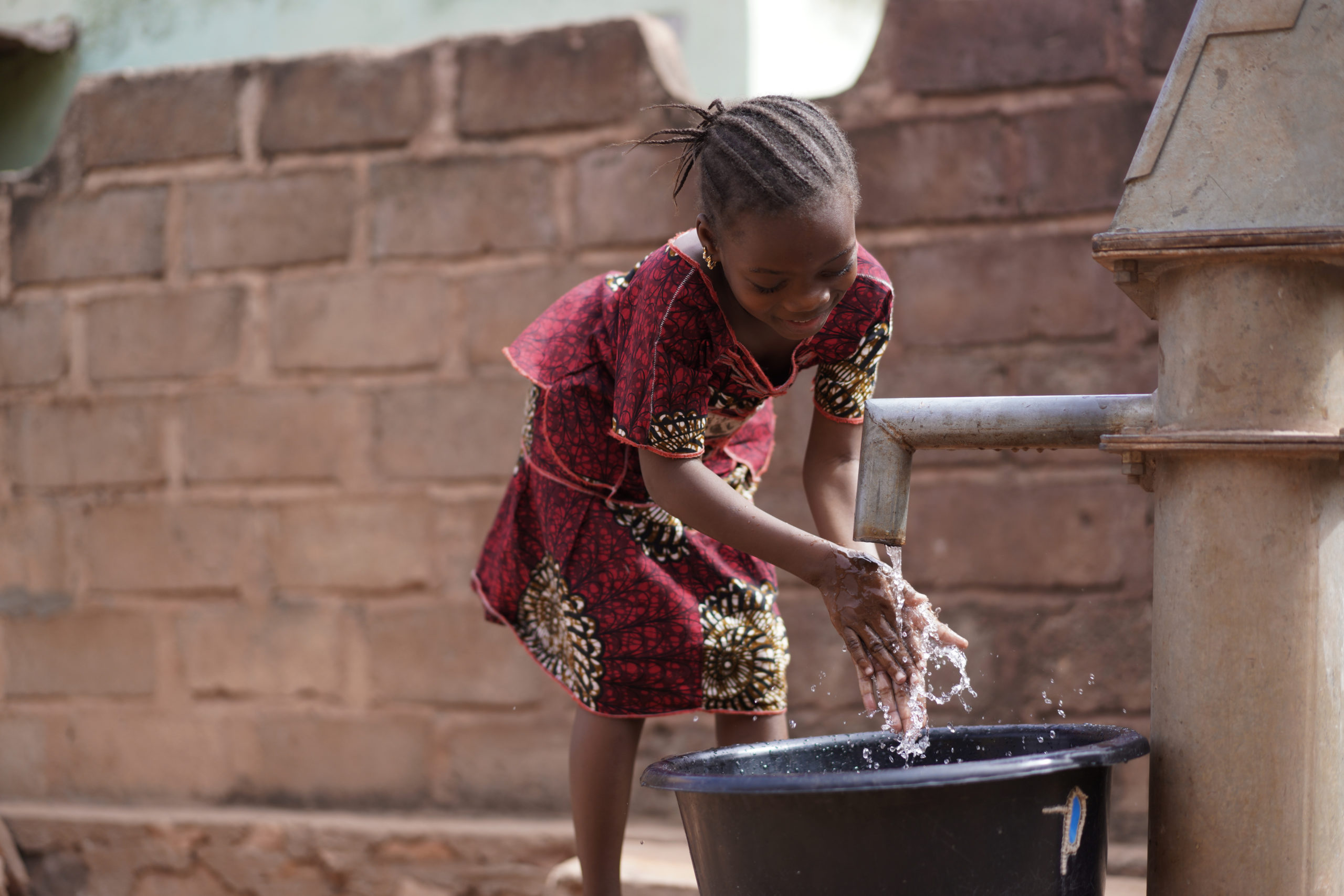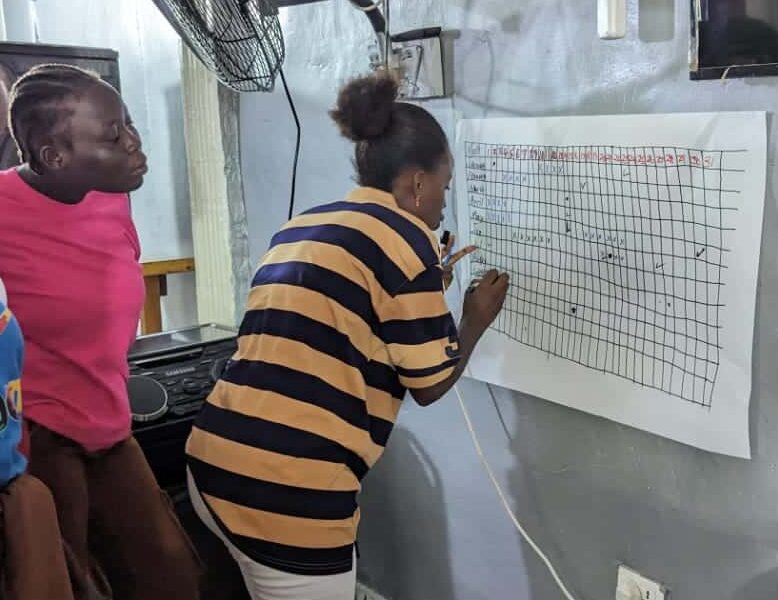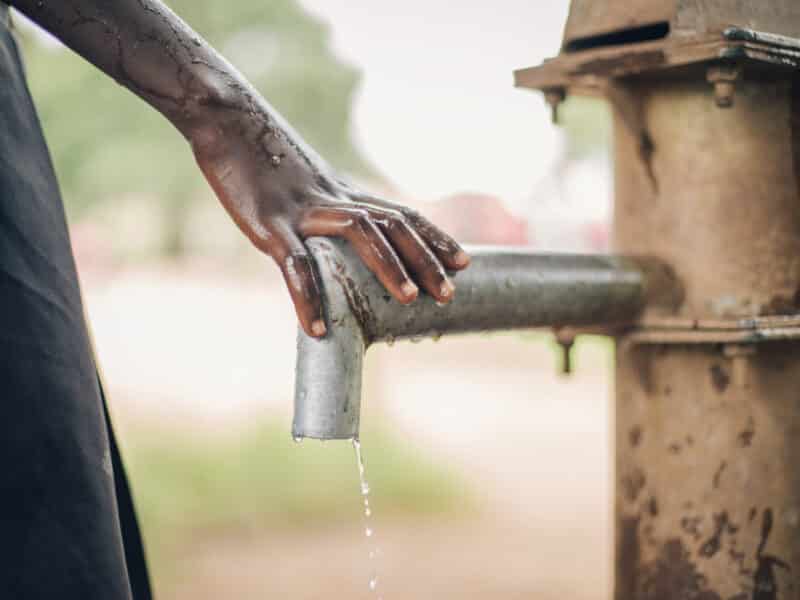Almost all households in two rural counties in Liberia say they want to use toilets every day, but many are ill-equipped to build, maintain and clean latrines, leaving more than 62 percent of people using rivers or the bush to defecate instead, new research from the Johns Hopkins Center for Communication Programs suggests.
With so much demand for toilets, the challenge is not so much convincing people to use them but creating an environment where they have the tools and support to not only build latrines, but to keep them sustainable for long periods of time. Rural residents perceive numerous benefits to toilet use and generally do not wish to use the bush, but financial and other barriers are standing in the way.
There are very few flush toilets in Lofa and Nimba counties. Latrines are often simple pits dug in the ground, with both a structure to support squatting and a roof and walls to protect privacy. Often, people who build latrines abandon them when they are full, or those who share latrines with others desert them because they become so dirty and unhealthy that they prefer to return to the bush to defecate.
“We are saying that building toilets alone is not the solution,” says CCP’s Nandita Kapadia-Kundu, who led the research for the USAID-funded Breakthrough ACTION Liberia project. “People want toilets, but we need to give them the support they need to create quality toilets and maintenance plans so they can make a habit of consistently using the toilet instead of the bush.”
Open defecation can pollute the environment and cause health problems and diseases. It can also be dangerous to girls and women, who must travel into the bush alone. High levels of open defecation are linked to poor nutrition, poverty and large disparities between rich and poor.
The CCP-led research included a survey of nearly 1,200 people as well as individual interviews and focus group discussions with 77 participants. A total of 33 communities were included in the survey, each with various levels of toilet use.
The researchers found that toilet use is not a social norm in these communities, with between 75 and 85 percent of respondents saying they believe that between zero and three people out of 10 of their neighbors use them regularly.
Handwashing is also an issue. Only 21 percent of respondents stated that they had a handwashing station within six feet of their latrines, and few had both soap and water. The researchers found that about one third of the users do not wash their hands with soap, another third have low levels of handwashing with soap (less than 6 times a week) and another third reported daily handwashing with soap after defecation (7 or more times).
Kapadia-Kundu says that handwashing with soap and toilet use behaviors must be considered together.
About 94 percent of current bush users expressed the desire to own a toilet, and 40 percent said they intended to build one in the next six-to-12 months. Another 28 percent of the respondents said they would like a toilet within six months. The majority of the bush users (86 percent) preferred to build their own toilets, but only five percent stated that they had the resources to build one and more than two thirds did not have the ability to construct one.
“Once latrines are built,” Kapadia-Kundu says, “we have to make using the toilet a pleasant experience. Many don’t understand how to clean the latrines or create a system to ensure community toilets are regularly cleaned. The key here isn’t just building the latrines, because within 12-to-18 months of construction people start going back to the bush when their toilets are spoiled. We need to help them understand how to keep their toilets clean and safe for the long term.”
Programs that help maintain toilet cleanliness, reduce attrition and build social norms around consistent toilet use are necessary, she says.
One woman from Lofa County said she stopped using a toilet and returned to the bush because she worried that her “spoiled” toilet could give her and her family infections.
“If I use the toilet, I may get sick from using it because it is not clean,” she told researchers.
The data notes that the large proportion of toilet sharing (67.4 percent) has led to a lack of accountability within communities for the cleanliness and maintenance of toilets. An individual’s experience of using the toilet naturally influences their decision to start and continue use. Less than a third of toilets were observed to have ventilation or were identified as improved systems. In contrast, 68.5 percent of toilets were noted to have a mild or strong odor detected when observed.
When the toilets aren’t maintained – often due to financial barriers – people stop using them and head back to the bush.
Kapadia-Kundu and her colleagues from CCP and Save the Children recommend the creation of programs where cleaning supplies are more available in the local shops, vouchers for toilet and handwashing station building and cleaning materials are provided, or subsidies are given to build and maintain toilets.
“Once toilets are individually owned, kept clean and have handwashing stations,” she says, “then sustainable change can be achieved.”
Adds Steve Sara, WASH advisor for Breakthrough ACTION partner Save the Children: “This study is an important contribution to national sanitation efforts in Liberia. The results demonstrate that there is high demand and commitment among rural households in Liberia to adopt latrines and end open defecation. However, there is a clear trend in communities returning to open defecation due to a lack of toilet cleanliness and maintenance. These insights suggest that future sanitation initiatives should focus efforts on ensuring a positive user experience and support in maintaining latrine infrastructure and pit management.”




